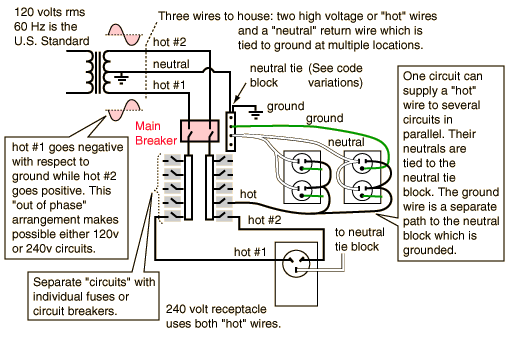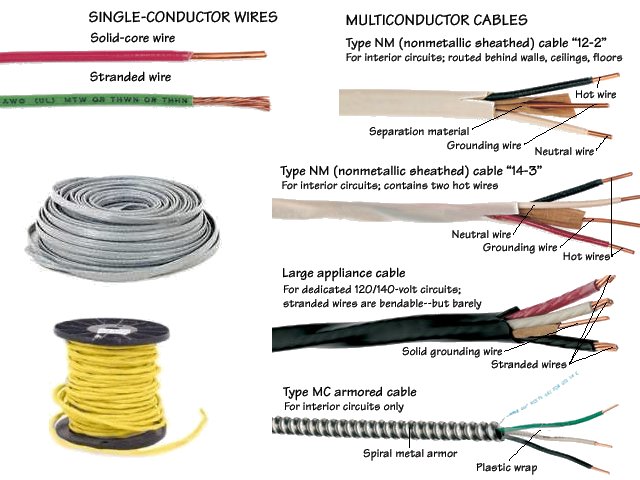Building Wiring and Circuit Panel
The standard U.S. household wiring design has two 120 volt "hot" wires and a neutral which is at ground potential. The two 120 volt wires are obtained by grounding the centertap of the transformer supplying the house so that when one hot wire is swinging positive with respect to ground, the other is swinging negative. This versatile design allows the use of either hot wire to supply the standard 120 volt household circuits. For higher power applications like clothes dryers, electric ranges, air conditioners, etc. , both hot wires can be used to produce a 240 volt circuit.
Wire Color Standard
- White - Neutral ..... (grounded conductor, neutral conductor, neutral point) conductor with continuity to the electrical system's center tap of the power company transformer.
- Black - Hot 110v / 120v ..... (positive, live wire) not grounded, the active wire which is most likely to electrocute a person. This is the dangerous wire!
- Bare - Ground ..... (grounding wire, earth ground) a conductor with continuity to earth, may be bare or identified insulated wire of green or having green stripes.
- Red - Hot 110v / 120v
Electricity flows along the black "live" wire, feeding whatever is required and then returns along the white "neutral" wire to its local transformer. The flow can be interrupted by a switch installed on the black "live" wire for most common household applications.
Standard Wire
Earth Ground
A true earth ground, as defined by the National Electrical Code, physically consists of a conductive pipe or rod driven into the earth to a minimum depth of 8 feet.
Switch and Receptacle Mounting Tips
The height from the floor for the following:
- Electrical Outlet is 12"
- Light Switch is 48"
- Indoor Thermostat is 60"



